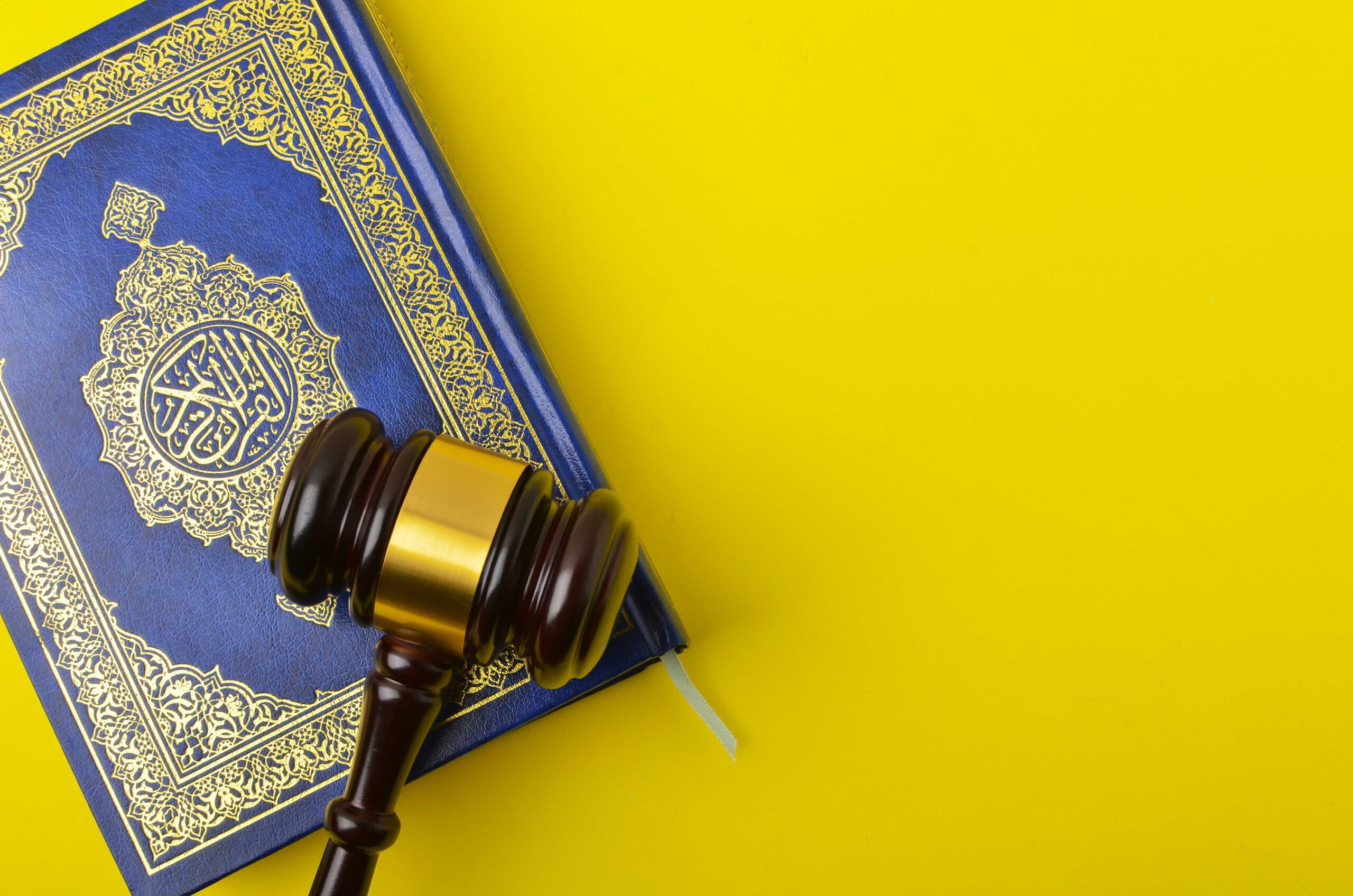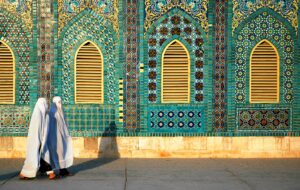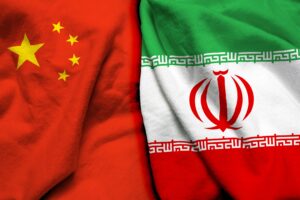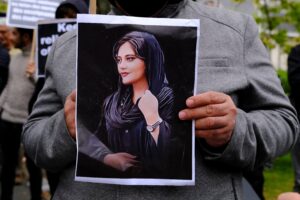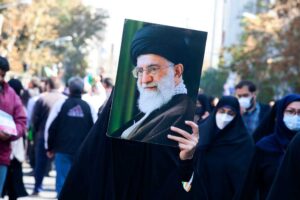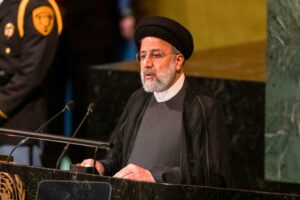The rise of the Taliban in Afghanistan during the 1990’s alongside al-Qaeda’s global profile sparked not only Western curiosity about Sharia, but also the centuries-old debate within Islamic scholarship on which Sharia is the correct and true one. Now with the Taliban back in power this debate has become more heathed than ever.
Roots of Sharia
Sharia, which means “path” in Arabic, is not only a legal code per se but rather an ethical and moral reference to all who adhere to Islam[i]. It is not only confined to religious matters but extends to issues which impact the daily life of individuals.[ii] Sharia is derived from religious precepts of Islam, particularly the Qur’an as well as the Hadith and Sunna, the sayings and teachings of the Prophet Muhammad.[iii] Throughout the years, different interpretations of the Qur’an and Hadith have taken hold in what is referred to as Tafseer (explanation) or Ijtihad (analogy).[iv]
This Tafseer is not arbitrary, however, and has rules guiding Islamic scholars who aim to provide it. Such guiding rules cover the order of verses within chapters and the historical context behind them, in addition to the criteria pertaining to the very selection of scholars. The latter requires linguistic knowlege, a broad understanding of the rules of Islam, and personal qualities of being just and fair.[v] This Tafseer or Ijtihad forms the basis of what is called fiqh (Islamic jurisprudence). In its essence, it is the embodiment of the morals, ethics, and legal provisions that exist in the Qur’an and the Hadith, which guides Islamic judges to issue what is known as Hukm (judgment).[vi] In addition to the Hukm, Islamic clerics often issue a Fatwa, a nonbinding legal opinion, based on the teachings of Islam.[vii]
Interpretations of Sharia were often subjected to external political and social influences and adapted in accordance to the desires of rulers.
Sharia has developed and changed over the centuries based on the different Hukms and Fatwas issued over time. Islamic scholars, jurists, and clerics have worked to provide individuals living in the realm of Islam with a clear interpretation of Sharia based on their readings of its sources.[viii] These readings, however, were often subjected to external political and social influences and adapted in accordance to the desires of rulers. Furthermore, Sharia as a dynamic adaptive concept only existed at the early age of Islam until the 11th century, when Muslim scholars declared the closure of the gate of ijtihad (legislation) and discouraged new legal interpretations.[ix] Notwithstanding, there were several attempts to reform Sharia in modern times by figures such as Muhammad Iqbal (d. 1938) in South Asia and Muḥammad ʿAbduh (d. 1905) in Egypt. However, their efforts fell short in the face of fundamentalists such as Abū al-ʿAlāʾ Mawdūdī (d. 1979), who opposed the ideals these reformers were promoting.[x]
Politicization of Sharia
Sharia started taking its current shape as early as the Umayyad Caliphate (661–750 CE). During the reign of the Umayyad dynasty, schools of fiqh were established and records of Fatwas and Hukms were written down and kept.[xi] It is also during this period that Sharia evolved into a more political doctrine as opposed to a strictly religious one.[xii] The Umayyads modeled their administrative and political system after the Persian and Byzantine systems, whose territories they had taken over.[xiii] Those systems conflicted with some aspects of early Islam, most notably, equality between all Muslims and rule by Shura (consultation as opposed to absolute rule). Thus, the Umayyads worked on establishing state-controlled religious entities to add legitimacy to their policies.[xiv]
Unlike in Western Europe, where the Catholic Church was an independent entity interfering in the politics of countries, Islam and Sharia quickly evolved under the Umayyads to be a state-controlled entity.
Unlike in Western Europe, where the Catholic Church was an independent entity interfering in the politics of countries, Islam and Sharia quickly evolved under the Umayyads to be a state-controlled entity. Fatwas and Hukms became a central tool in the hands of caliphs to consolidate their power and add much-needed religious legitimacy to their nascent and oft-challenged rule.[xv]
Islamic clerics under the Umayyads became state servants and worked on promoting ideals focusing on the benefit of the political elite. They argued for a holy and strong ruler who should have unlimited power in service of uniting the community of Muslim believers. Furthermore, some clerics issued fatwas declaring that refusing to obey the Caliphs to be a great sin for which death can be the punishment.[xvi] These kinds of ideals were largely motivated by the first Fitna (656-661 CE), which was the civil war within the Rashidun Caliphate that led to the rise of the Umayyads. Thus, Islamic scholars and rulers of the Umayyads were mostly concerned about preventing another internal strife from breaking out and instead focused on uniting the Muslim Ummah, more so than implementing rules of Sharia.[xvii]
For example, Al-Hasan Al-Basri, a renowned contemporary Islamic scholar and judge issued a fatwa that reads “By Allah, the religion cannot be implemented correctly without those who are in power, even if they are unjust. Allah will help them reform, more than corrupt.” [xviii] Thus, in the eyes of contemporary Islamic scholars, one must be patient and not argue with the ruler even if they are corrupt, as Allah will guide them to benefit the ummah in the end.[xix]
The subsequent caliphates after the Umayyads did not attempt to reform and bring more autonomy to Islamic scholarship; quite the opposite, they further mobilized Sharia to the benefit of the political elite.[xx] During the Abbasid Caliphate (750-1258 CE), a diwan (ministry) was established to deal with zanādiqa, a vague term that refers to individuals who violate central Islamic dogmas through speech or action.[xxi] However, the term was just used as a religious cover to justify arresting, prosecuting, and imprisoning those dissenting to the Abbasids.[xxii]
During the Mamluk Sultanate (1250-1517 CE), infighting was common among the royals, as under the Mamluk political system all princes were eligible to the throne.[xxiii] This led to numerous conflicting fatwas being issued by Islamic scholarship depending on their political allegiance. For example, in 1258 Al-Mansur Ali was dethroned and replaced with Qutuz after a fatwa was issued by Islamic scholar Siraj al-Din al-Bulqini. Another fatwa came from the scholar Alam El-din Al-Bulqini, which allowed the Sultan to strip the title of caliph from Al-Qa’im B A’amr Allah.[xxiv]
In the Ottoman Empire (1299-1922 CE), despite its large Christian and Jewish populations, Islam was the uniting political element of the empire, a fact that the sultans realized early on. As a result, they established the office of Shaykh al-Islām (grand mufti) to justify all their policies.[xxv] In theory, sultans should have abided by Sharia and Islamic teaching. In reality, they maintained absolute rule with few imams daring to disobey and instead often issued Fatwas and Hukms to justify the behavior of their rulers even if it was at odds with traditional interpretations[xxvi]. In 1513, Ali Ben Ahmed, then-Shaykh Al-Islam, issued a fatwa which allowed the extermination of more than forty thousand Shia.[xxvii] During the reign of Murad IV, coffee was declared a sin and drinking it was punishable by death. Clerics justified this ban with the drink’s stimulating nature. In reality though, Murad IV wanted coffee banned in order to combat social discussions and the emergence of rebellious ways of thinking. Politics discussed in coffeehouses was something he felt could endanger his rule.[xxviii]
Fall of the Empire and the rise of political Islam
On 3rd March, 1924, the office of the Caliph was formally abolished by the newly established Turkish Republic under Mustafa Kemal Atatürk. This meant that for the first time in centuries, Islam did not have a central governing body. This power vacuum was soon filled by newly established religious entities across the lands once controlled by the Ottomans.[xxix]
During the era of colonialism, there was an undeclared conflict among Islamic and secular factions who were fighting for independence. In Egypt, the Free Officer Movement – a socialist and anti-colonial movement that carried out the overthrow of the monarchy in 1952 – aligned itself with the Muslim Brotherhood, which called for the establishment of an Islamic emirate. This alliance was driven by the desire of some of the military officers to gain religious legitimacy, but quickly discarded them once it found no use for them in power. Instead, it started prosecuting them.[xxx
In Arabia, the House of Saud formed an alliance with Mohamed Ibn Abd Al-Wahab, the founder of the fundamentalist sect of Islam commonly known as Wahhabism, which calls for the return to a true and pure Islam of the Prophet. This alliance helped the House of Saud gain religious legitimacy and aided them in their fight to re-establish a unified kingdom for themselves in Arabia, something they would finally succeed at in 1932.[xxxi]
This set the scene for an Arab Cold War led by those two countries. One camp, under Egypt’s Gamal Abdel Nasser’s leadership, was characterized by socialism, secularism, and pan-Arabism while the other was led by Saudi Arabia, and was defined by conservatism, fundamentalism, and a religiously-guided monarchical system.[xxxii]
In the aftermath of the Six-Day War in 1967 between Israel and its Arab neighbours, Islamic countries became increasingly more wary of western countries since many of them took Israel’s side in the conflict. The aftermath of the war did not just undermine trust between Islamic and Western countries but also undermined the pan-Arabism movement.[xxxiii] Thus, the failure of pan-Arabism at this war and Western alliance with Israel paved the way for Islamic powers to rise as an alternative to the failed secular Pan-Arabist governments.[xxxiv]

State-sponsored religious morality
After 1967, such secular regimes realized that they would need to rely again on religious entities to add legitimacy to their rule. This was not only due to their defeat in the war with Israel but also a change of demographics in their countries. Large portions of their middle classes sought work in fundamentalist religious states of the Gulf following the oil boom of the 1970s.[xxxv]
This does not mean that secular rulers relinquished their powers to religious authorities. Quite the opposite, they sought to restore the centuries-old government control over religion. The autocrats of the Islamic world often derived their legitimacy from Islam and needed religious entities to cooperate with them to achieve that.[xxxvi] Therefore, religious entities were integrated into the state and their religious interpretations were put to use for its benefit.[xxxvii]
This created a custom morality based on the interpretation of Sharia by a few religious figures of the elite, who would issue Fatwas within the lines of governmental agendas.[xxxviii] This can be seen in the modern role of Al-Azhar – the highest religious authority in Egypt – as it has been used by political leaders to justify their policies. Former President Anwar Sadat forced Al-Azhar to issue a fatwa to add legitimacy to his peace deal with Israel in the aftermath of the Yom Kippur War.[xxxix] His successor, Hosni Mubarak, mobilized Al-Azhar and made them issue fatwas supporting him not only in his conflict with political Islam but also in his war against violent fundamentalist Islamist groups in the 1980s and 1990s.[xl]
Al-Azhar also changed its stance on female genital mutilation (FGM)[xli] as it was arguing for its favors during the late twentieth century[xlii] before declaring it a sin in the 2000s after the government started an anti-FGM campaign following pressure from the international community. A study found that more than 90% of Egyptian women underwent FGM.[xliii]
In Saudi Arabia, a royal decree was issued in 2010 which made the state-sponsored Council of Senior Scholars the only body allowed to issue public fatwas. The official reasoning behind this decree was to protect Saudi society from extremists doing the same whereas, in reality, this decree was nothing but a new chapter in the monopolization of religious power by the royal family. In 2017, the Grand Mufti issued more than eight fatwas and statements warning against disobeying the legitimate ruler, i.e. the king, and preaching the virtues of allegiance to the current ruler, thereby further bolstering the monarchy’s religious authority. Such fatwas were versatile and adaptive to the changes in royal hierarchy. The council can use them depending on who is in line for the throne.[xliv]
As the Taliban stormed through Kabul, they declared they would be implementing Sharia law.[xlv] However, Sharia law in itself is not codified, and its implementation has been varied since the early days of Islam. When examining Sharia, one must view it as the socio-political doctrine it evolved to be, and not judge it on its religious merits alone. The Taliban’s implementation of Sharia will be dependent on their own socio-political context as well as Afghan social traditions, not merely religious grounds. As such, this is nothing new but rather another iteration of Sharia being adapted to local conditions.[xlvi]
[i] “What Is Sharia?”. 2021. The Economist. https://www.economist.com/the-economist-explains/2021/09/08/what-is-sharia-law.
[ii] “How Did The Sharia Law Develop? – Dailyhistory.Org”. 2018. Dailyhistory.Org. https://dailyhistory.org/How_did_the_Sharia_Law_develop%3F.
[iii] “Hadith And Sunnah – The Qur’An And Sacred Texts – GCSE Religious Studies Revision – WJEC – BBC Bitesize”. 2021. BBC Bitesize. https://www.bbc.co.uk/bitesize/guides/zpmm97h/revision/6.
[iv] Saeed, Maryam. (2019). IJTIHAD PHILOSOPHY. 10.13140/RG.2.2.33745.89449. https://www.researchgate.net/publication/336679071_IJTIHAD_PHILOSOPHY
[v] محمد بن عبدالعزيز الخضيري- مقدمة في قواعد اتفسير – مداد -200, http://midad.com/article/196063/مقدمة–في–قواعد–التفسير
[vi] UKEssays. November 2018. Relationship Between Law And Ethics In Islam. [online]. Available from: https://www.ukessays.com/essays/philosophy/relationship-between-law-and-ethics-in-islam-philosophy-essay.php?vref=1
[vii] Abou El Fadl, K. (2017). Qurʾanic Ethics and Islamic Law. Journal of Islamic Ethics 1, 1-2, 7-28, Available From: Brill https://doi.org/10.1163/24685542-12340002
[viii] Abou El Fadl, Dr Khaled. 2021. “The Nature Of Law And Morality: Plain Islam”. Plainislam.Com. https://www.plainislam.com/in-depth/the-nature-of-law-and-morality/.
[ix] Keskin, Zuleyha, and Mehmet Ozalp. 2021. “Explainer: What Is Shariah Law And What Version Of It Is The Taliban Likely To Implement?”. The Conversation. https://theconversation.com/explainer-what-is-shariah-law-and-what-version-of-it-is-the-taliban-likely-to-implement-166490.
[x] Abou El Fadl, K. (2017). Qurʾanic Ethics and Islamic Law. Journal of Islamic Ethics 1, 1-2, 7-28, Available From: Brill https://doi.org/10.1163/24685542-12340002
[xi] “نبذة عن الحركة العلمية الشرعية في العهد الأموي – اسلام اون لاين”. 2017. اسلام اون لاين. https://islamonline.net/الحركة–الشرعية–العهد–الأموي/.
[xii] Hitti P.K. (1970) Political Administration and Social Conditions under the Umayyads. In: History of the Arabs. Palgrave, London. https://doi.org/10.1007/978-1-349-15402-9_20
[xiii] Ibid.
[xiv] الحمداوي, عبدالكريم. 2016. “السياسة الشرعية عند الفقهاء افتئات على الشريعة الإسلامية”. Asharqalarabi.Org.Uk. http://www.asharqalarabi.org.uk/السياسة–الشرعية–عند–القهاء–اتئات–على–الشريعة–الإسلامية_ad–id!341947.ks.
[xv] حمزاوي, امين. 2019. “الإسلام السياسي: كيف تحولت آراء الفقهاء السياسية إلى “شريعة”؟”. حفريات. https://www.hafryat.com/ar/blog/الإسلام–السياسي–كيف–تحولت–آراء–الفقهاء–السياسية–إلى–شريعة؟.
[xvi] البخاري, إبراهيم بن توفيق. 2009. “حقوق ولاة الأمر بين الإفراط والتفريط”. Saaid.Net. http://www.saaid.net/ahdath/102.htm.
[xvii] Corcuera, Bob. 2017. “What Happened In The First Fitna?”. Exploringhist.Blogspot.Com. https://exploringhist.blogspot.com/2017/12/what-happened-in-first-fitna.html.
[xviii] السيني, علاء حسن. 2013. “الفقهاء ودورهم السياسي في الدولة الأموية “الحسن البصري أنموذجاً “”. Iasj.Net. https://www.iasj.net/iasj/download/c542d5116734fe0c.
[xix] Ibid.
[xx] حمزة, د.علي. 2012. Madina. https://www.al–madina.com/article/135062/كتاب/تسييس–الأحاديث–النبوية-1-2.
[xxi] “Zandaqa”. 2021. Hmongwiki.De. https://hmongwiki.de/wiki/Zandaqa.
[xxii] الديباوي, أحمد. 2018. “الزندقة.. سلاح الطغاة والفقهاء لمواجهة المعارضين والعقلاء”. حفريات. https://www.hafryat.com/ar/blog/الزندقة–سلاح–الطغاة–والفقهاء–لمواجهة–المعارضين–والعقلاء.
[xxiii] “Mamluk | History, Significance, Leaders, & Decline”. 2021. Encyclopedia Britannica. https://www.britannica.com/topic/Mamluk.
[xxiv] عاشور, مصطفي. 2018. “الفتوى في العصر المملوكي – اسلام اون لاين”. اسلام اون لاين. https://islamonline.net/الفتوى–في–العصر–المملوكي.
[xxv] اوغلو, د. مــــتــــــــــــين شـــــــــريــــــــــــــف. 2021. “جدلية الدين والسياسة في الدولة العثمانية وانعكاساتها على تجربتها الدستورية”. Dergipark.Org.Tr. https://dergipark.org.tr/tr/download/article-file/1557079.
[xxvi] غثمانلي, محمد. 2020. “شرعيةٌ متغلّبة وسيادةٌ مفتّتة”. الجمهورية.نت. https://www.aljumhuriya.net/ar/content/شرعيةٌ-متغلّبة–وسيادةٌ-مفتّتة.
[xxvii] عبدالرحمن, محمد. 2020. “تاريخ الدولة العثمانية فى استغلال الإسلام.. سلاطين العثمانيين أصدروا الفتاوى من أجل استباحة دم الأبرياء وسرقة الأموال.. التاريخ يؤكد: لم يحج منهم أحد.. وأردوغان اعتاد التجارة باسم الدين و”آيا صوفيا” الدليل – اليوم السابع”. اليوم السابع. https://www.youm7.com/story/2020/10/26/تاريخ–الدولة–العثمانية–فى–استغلال–الإسلام–سلاطين–العثمانيين–أصدروا–الفتاوى/5038847.
[xxviii] Hay, Mark. 2018. “In Istanbul, Drinking Coffee In Public Was Once Punishable By Death”. Atlas Obscura. https://www.atlasobscura.com/articles/was-coffee-ever-illegal.
[xxix] “Heritage Times – The Abolition Of The Office Of The Caliph Is Marked As A Turning Point In History.”. 2018. Heritage Times. https://heritagetimes.in/last-ottoman-caliph/.
[xxx] Shaoul, Jean. 2012. “The Egyptian Revolution, The Muslim Brotherhood And The Apologetics Of The Revolutionary Socialists”. World Socialist Web Site. https://www.wsws.org/en/articles/2012/01/bro2-j06.html.
[xxxi] “عائلة آل سعود: كيف وصلت للحكم وأسست الدولة التي منحتها اسمها؟”. 2015. فرانس 24 / France 24. https://www.france24.com/ar/20150123-السعودية–الملك–آل–سعود–تاريخ–الدولة.
[xxxii] Ryan, Curtis. 2012. “The New Arab Cold War And The Struggle For Syria – MERIP”. MERIP. https://merip.org/2012/03/the-new-arab-cold-war-and-the-struggle-for-syria/.
[xxxiii] Ajami, Fouad. 1978. “The End Of Pan-Arabism”. Foreign Affairs. https://www.foreignaffairs.com/articles/middle-east/1978-12-01/end-pan-arabism.
[xxxiv] Ibid.
[xxxv] Osman, Tarek. 2015. “مأساة الإسلام السياسي: قرن من التجارب مع الحداثة”. The Cairo Review Of Global Affairs. https://www.thecairoreview.com/arabic/مأساة–الإسلام–السياسي/.
[xxxvi] Johnson, Toni, and Mohammed Aly Sergie. 2014. “Islam: Governing Under Sharia”. Council On Foreign Relations. https://www.cfr.org/backgrounder/islam-governing-under-sharia.
[xxxvii] Ibid.
[xxxviii] Mubarak, Ali. 2009. “Religion And Politics: Integration, Separation And Conflict – Irénées”. Irenees.Net. http://www.irenees.net/bdf_fiche-analyse-884_fr.html
[xxxix] العرب. 2014. “الفتوى والسياسة والأجندة.. الحق الذي أريد به باطل | | صحيفة العرب”. صحيفة العرب. https://alarab.co.uk/الفتوى–والسياسة–والأجندة–الحق–الذي–أريد–به–باطل.
[xl] Moustafa, Tamir. (2013). Conflict and Cooperation Between the State and Religious Institutions in Contemporary Egypt. International Journal of Middle East Studies. 32. 10.1017/S0020743800021024. https://www.jstor.org/stable/259533
[xli] “جدل في مصر حول ختان الإناث: “الختان لا يمت للدين بصلة، بل إنه عادة خطرة””. 2012. فرانس 24 – مراقبون. https://observers.france24.com/ar/20120522-جدل–في–مصر–حول–ختان–الإناث–الختان–لا–يمت–للدين–بصلة،-بل–إنه–عادة–خطرة.
[xlii] “فتوى قديمة تكشف تضارب رأى الأزهر حول الختان.. جادالحق: الأحناف أوجبوا قتال من منعه”. 2018. امان. http://aman.dostor.org/show.aspx?id=7549.
[xliii] Kampfner, Andoni. 2016. “Female Genital Mutilations In Egypt: A New Frontier In The Struggle For Power, Influence And Authority Among The State And Islamic Institutions”. Sciencespo.Fr. https://www.sciencespo.fr/kuwait-program/wp-content/uploads/2018/05/KSP_Paper_Award_Spring_2016_SANTAMARIA-KAMPFNER_Andoni.pdf.
[xliv] ALAOUDH, ABDULLAH. 2018. “State-Sponsored Fatwas In Saudi Arabia”. Carnegie Endowment For International Peace. https://carnegieendowment.org/sada/75971.
[xlv] Hood, Laura. 2021. “Explainer: What Is Shariah Law And What Version Of It Is The Taliban Likely To Implement?”. The Conversation. https://theconversation.com/explainer-what-is-shariah-law-and-what-version-of-it-is-the-taliban-likely-to-implement-166490.
[xlvi] Synovitz, Ron. 2021. “Taliban ‘Tribal Version’: Shari’a Is Not The Same Everywhere”. RFE/RL. https://gandhara.rferl.org/a/taliban-sharia-law-afghanistan/31488108.html.

